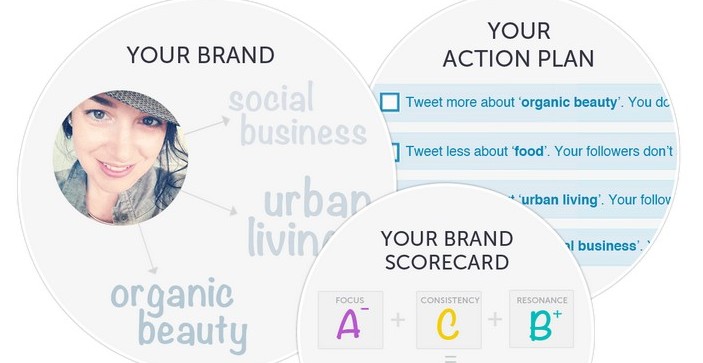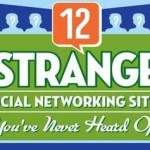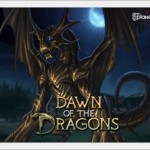As written for SocialMediaToday
Your Personal Brand
Run a search for “building your brand” and every major publication has some staff or contributing author delivering a recent article on the subject. In today’s economic environment, jobs, titles, and skills are all evolving. Scientists work with data as much as they work with particles and molecules. And we marvel at AMC’s Mad Men, in part, because yesterday’s left-brain ad exec is so foreign to today’s data-driven marketer.
The one constant that we can mold, influence, and maintain in a world of vocational change, is our own personal brand.
In a recent Entrepreneur.com article, “Ultimate Guide to Twitter for Business” author Ted Prodromou defines brand personality as something to which the consumer can relate. “An effective brand will increase its brand equity by having a consistent set of traits,” he explains. The value that your personal brand gains will both showcase your personal expertise, and identify you as an authority in your field.
A well defined and executed personal brand will stay with you. But you’ve got to establish it, and continually nurture it. For many of us who want to establish ourselves as thought leaders, influencers, and recognizable personalities, the personal brand building experience takes place online.
The importance of the personal brand is relevant for business leaders of an SMB, as well. While the practice of self-branding is different from building a corporate brand, at the end of the day, it’s still all about selling and marketing things. One of the most important things you can do both for yourself and your business is build up your personal brand. Because remember, people don’t just buy products and services, they buy into people.
Why Twitter?
The rise of social channels and technologies has made personal branding within reach for the masses. As far as channels go, Twitter has gradually emerged as the brand paver’s trowel of choice. Of all the social channels available to us, why Twitter?
First, it’s largely public. Whereas the very premise of social networks Facebook and LinkedIn, for example, are closed and controlled. And despite Google’s pontification they have the “second largest network,” Twitter is more mature than Google+, and much more frequently used. For evidence of that, merely look at the set of social sharing counters for any articles you read (including this one).
If you consider that Twitter is a succinct, more far-reaching form of blogging, the same types of rules apply. As you tweet about your expertise on a set of topics, you’ll become known for them. Trusted experts are relied upon to distribute brand-relevant news, commentary, and information. There’s a structure to adhere to this to establish lasting, growing brand alignment.
The Three Pillars
My friend and peer Eric Kim is the founder of brand engagement platform, Twylah. His platform is used by thousands of personal, business, organizational and celebrity brands. From social media experts likeNeal Schaffer, organizations like the Conservation International, big names like Tom Cruise, to countless personal brands, and even all around great guys (obligatory self-promotion plug).
Through deep study of the role of Twitter in brand building, he and his team have carefully identified three pillars critical to online brand alignment: Focus, consistency and resonance.
In terms of Twitter brand management, your Focus relates to on-brand messaging. First thing’s first–you can’t be known for 100 things. The process, then, begins when you narrow it down with three essential questions:
- What is your ideal customer?
- Who are they?
- What do they value?
Given all of these considerations, what are all the things that make you a good candidate?
Next is Consistency. Consistency means both timing and frequency relative to your brand-related topics of interest. Kim’s research has shown that it can take a person three to six months of working consistently with Twitter to establish a process around achieving your brand goals.
Third is Resonance, the way of gauging the reach of your “on brand” content to the audience you’re aiming to attract. This is a measure of how well your content aligns with your audience’s interests.
Wow, so three pillars to building my personal brand with Twitter sounds like a whole lot of work. Well yes, left to fundamental devices and little more than direction, it is.
Demystification of Twitter Brand Building
But realistically, that’s a whole lot of work few have time for, and Kim and his team know that. Twylah simplifies your Twitter brand management by breaking it into three modules: Your brand, your action plan, and your brand scorecard.
This system indexes and organizes Twitter content, giving it both findability and longevity. And of course, because the nature of the network, your personal brand reaches further with Twitter distribution. What’s more, there’s no SEO or Twitter best practices to concern yourself with. “If you want to generate hundreds and hundreds of indexed pages of content, this is how you do it,” Kim explains.
Your focus is what content resonates, making it your own by imparting your voice and curation activity, and pressing “send.” That’s it. Thats what makes Twylah’s brand management and free assessment so valuable to small social businesses and personal brand builders.
In this way, your focus is on becoming an expert in your field, not in becoming a social media expert. Using the three pillars and right tools can help drive those results and turn your Twitter brand building experience into a lasting, valuable endeavor.



